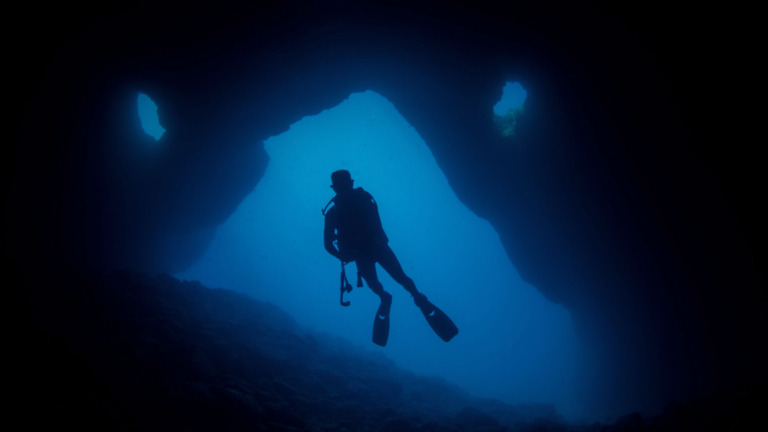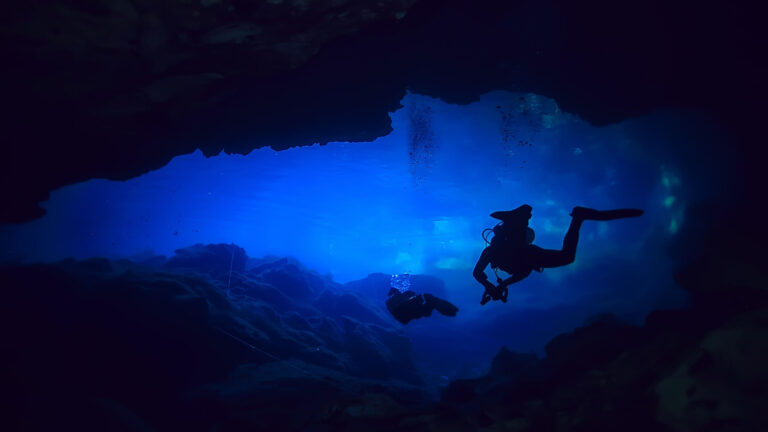Back in 2014, a group of Finnish cave divers explored the natural wonders of Norway’s Plura cave. Two of them tragically lost their lives. Here is the full heartbreaking tale.
Norway, a land of breathtaking landscapes and natural wonders, is a country renowned for its incredible nature. Much of it is accessible, but not all. Among its hidden treasures lies the Plura Cave, a mysterious underworld that has long captivated the hearts of adventurous souls around the world.

However, this awe-inspiring cave has also witnessed a tragic incident that serves as a solemn reminder of the risks involved in cave exploration in Norway and beyond.
Join us as we delve into the depths of Norway's Plura Cave, uncovering its beauty and the heroic recovery efforts that followed a fateful day.
Plura Cave: A hidden jewel in Norway
Carved over centuries by the currents of the Plura River, this stunning cave system in the region of Rana enthralls visitors with its beauty. Divers are drawn to its icy waters and narrow passages, where they can marvel at mesmerizing geological formations.
Divers were often drawn to Plura because of the half-kilometre underground swim that led to a long, colourful cave. Hobby divers often reach this point then turn back. But the highly experienced can go on. There is a much deeper, narrower and longer route to Steinugleflaget cave.
Read more: Diving in Norway: The Country’s Best Diving Sites
Cave diving is dangerous at the best of times, but the journey to Steinugleflaget especially so. It’s a five-hour trip to a depth of more than 130 metres and requires the assistance of underwater scooters.
“The deeper part is very demanding, very cold water and narrow tunnels, and deep as well. It is the world's deepest sump that has been dived through,” diver Patrik Gronqvist told the BBC.
With the extreme cold temperatures and high pressures involved, a tear in a diver’s dry suit could be deadly. Equipment failture and carbon dioxide poisoning are two other major risks.
The 2014 tragedy
In February 2014, a group of five experienced Finnish divers embarked on an ambitious journey to explore the depths of Plura. They cracked through the surface ice with the ultimate aim of reaching Steinugleflaget.

Tragically, during the dive, two divers encountered difficulties in the deepest parts of the cave and died. The first became entangled in an equipment cord and drowned while traying to change breathing apparatus. Police believe the second victim panicked when he came upon the scene.
The three survivors were all hospitalised in Tromsø with decompression sickness. Norwegian authorities took statements from them and closed the cave.
The heroic recovery
Following the devastating accident, the recovery of the fallen divers' bodies became a mission of honor for their surviving colleagues.
This feeling only increase when an official recovery attempt by a team of experienced British cave divers was called off due to the high risks encountered.
Despite the cave being officially closed for further exploration, a large team of experienced Finnish and Norwegian divers planned a second recovery operation in secret. The recovery team included the surviving cave divers.
Vesa Rantanen was still recovering from a spinal injury caused by his decompression sickness. He nevertheless acted as surface manager during the recovery attempt. The prior cave experience gave the second team an advantage over the first rescue team.
“I don't say that there was no risk to us,” Paakkarinen told the BBC. ”Quite the opposite, it is one of the most challenging dives that you can do. But then again, we have the best knowledge of the place, we are the original explorers of the place, we know the place like our own pockets,” he added.
In the end, the meticulous planning for the complicated five-day operation paid off. Once the bodies had been recovered, the group held a moment of silence, before going to the Norwegian Police the following day.
Paakkarinen said that he felt the police were pleased that they had recovered the bodies, but made it clear there would be an investigation. The group had to wait six months before being cleared of any charges for performing the illegal dive.
It was another six months before the group was told that they would face no charges for their illegal dive. Finland’s president later awarded Gronqvist the First Class Medal of the White Rose of Finland.
Lessons learned and a lasting legacy
The 2014 disaster wasn’t the first time there had been loss of life at Plura. A Norwegian man died in the cave in 2006. Even so, the cave was reopened for cave diving following the recovery operation.
The incidents served as a stark reminder of the inherent dangers lurking in the depths and the utmost importance of training, preparation and vigilance.
A Finnish documentary brought the tragedy to wider attention. It covered the incident using original footage from the rescue attempt. Despite everything, Gronqvist, Rantanen, Kankanen and Paakkarinen continue to enjoy the sport.
British diver Rick Stanton from the first, aborted, recovery mission, told the BBC that he admires the recovery attempt but that he remains troubled by the event. He said that with proper training and planning, accidents such as this should never happen to experienced divers.
“This incident happened, and then they've made a film and they all come out as heroes,” he says. “But these two people should never have died in the first place.”
While the Plura Cave beckons with its enchanting allure, it demands the utmost respect and caution from those who dare to venture into its depths.

